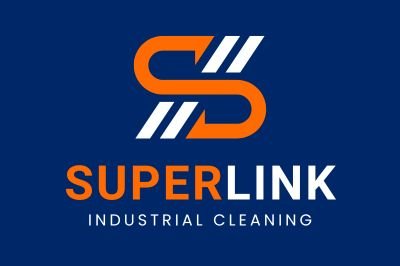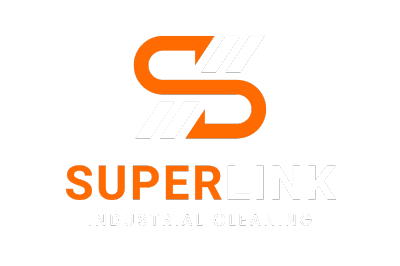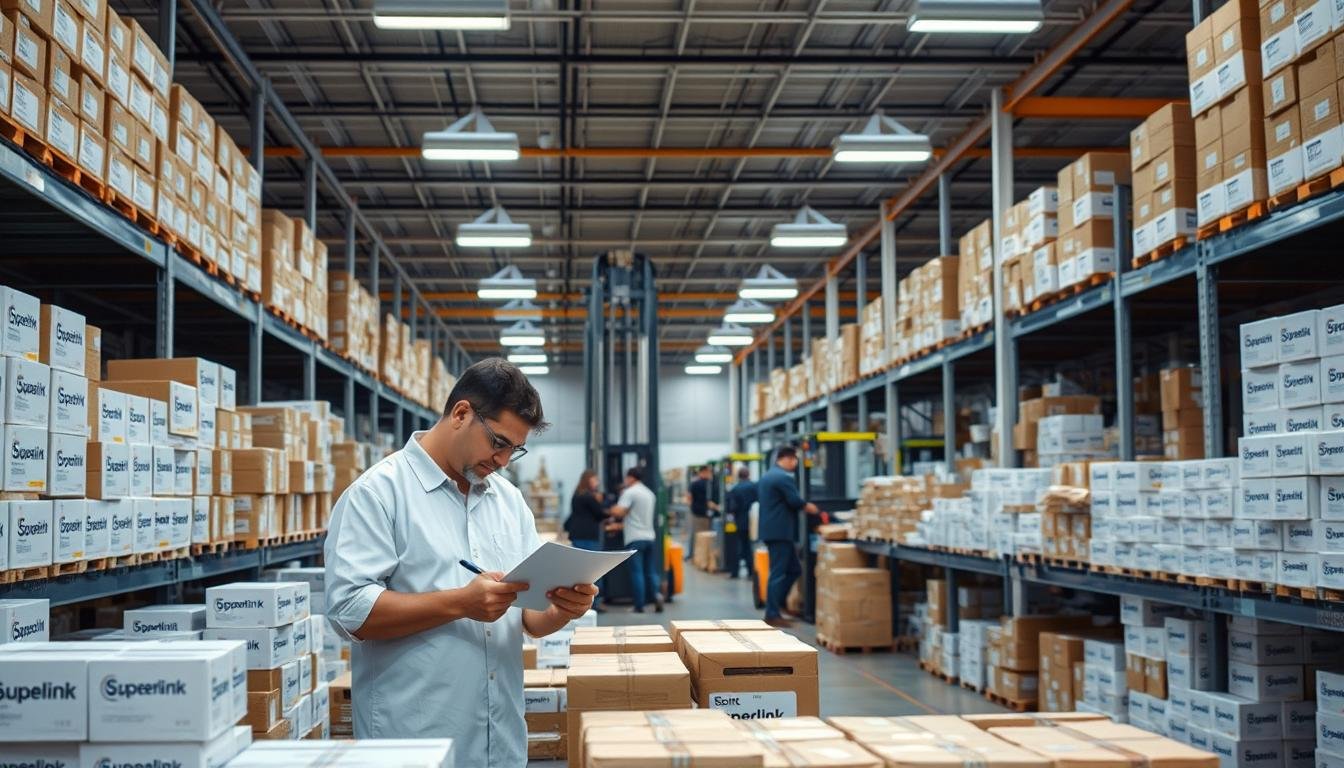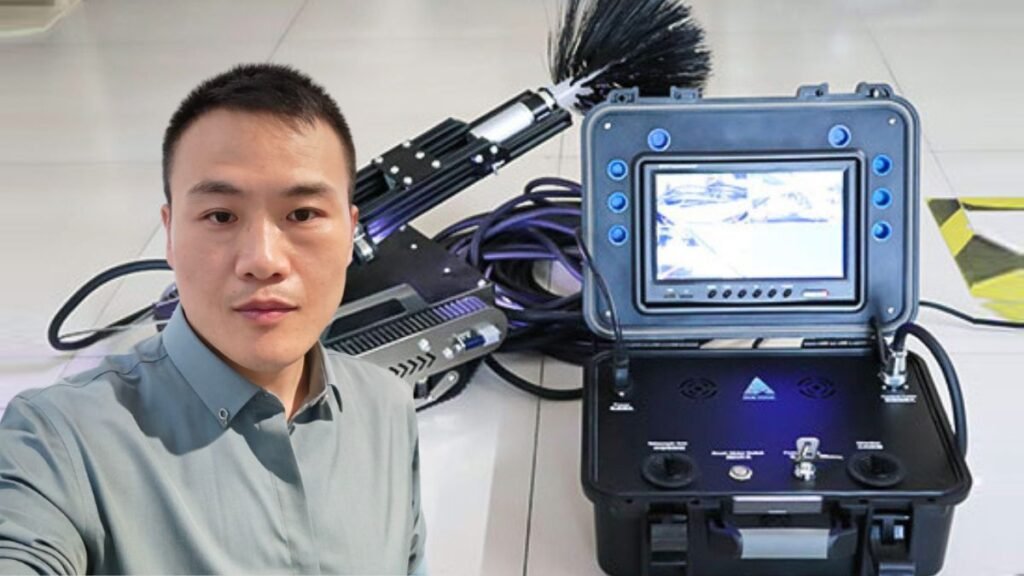Is your commercial kitchen ventilation system silently risking your restaurant? Every year, thousands of restaurants face disasters due to neglected kitchen duct cleaning equipment. This could have been avoided with proper maintenance.
Kitchen ducts are key to restaurant safety and efficiency. They can accumulate grease, posing fire hazards and health risks. Knowing how to maintain your Kitchen Duct Cleaning Equipment is not just wise—it’s vital for your business’s survival.
Professional kitchen managers understand the importance of maintaining commercial kitchen ventilation systems. This proactive approach can greatly reduce operational risks. It prevents fires and ensures air quality, making your kitchen run smoothly.
Key Takeaways
- Regular maintenance prevents dangerous grease buildup
- Proper equipment care reduces fire and health risks
- Efficient maintenance saves significant energy costs
- Consistent inspections protect business reputation
- Strategic cleaning minimizes equipment failures
Importance of Kitchen Duct Maintenance
Kitchen exhaust systems are key in commercial food spaces. Keeping them clean is not just a good idea. It’s a must for safety, protecting everyone involved.
Why Duct Cleaning Matters
Ignoring kitchen exhaust maintenance can cause big problems. Over 70% of commercial kitchen fires start from dirty exhaust systems. Cleaning these systems is vital to avoid such disasters.
- Reduces fire risk dramatically
- Improves overall kitchen air quality
- Enhances equipment performance
- Ensures compliance with safety regulations
Legal Requirements
Rules demand strict maintenance of kitchen ventilation. The Regulatory Reform (Fire Safety) Order 2005 says businesses must:
- Do regular fire risk checks
- Have good fire management plans
- Keep kitchen exhaust fans clean
- Keep records of maintenance
“Clean ducts are not just about hygiene – they’re about survival in the commercial kitchen environment.”
Safety Concerns
The National Fire Protection Association (NFPA) stresses the importance of keeping kitchen exhaust systems clean. Regular cleaning stops disasters and keeps workplaces safe.
| Kitchen Type | Cleaning Frequency | Risk Level |
|---|---|---|
| High-Volume Operations | Every 3 months | High |
| Moderate-Volume Kitchens | Every 6 months | Medium |
| Low-Volume Kitchens | Annually | Low |
Proactive maintenance isn’t just smart – it’s essential for protecting your business, employees, and customers.
Understanding Kitchen Duct Cleaning Equipment
Working in kitchen duct cleaning needs special tools. These tools keep kitchens safe and efficient. The right tools, like Duct Cleaning Machines and Brushes, are key to a clean kitchen.
Choosing the right equipment is vital for kitchen maintenance. Let’s explore the essential tools for a clean kitchen!
Types of Equipment Available
- High-powered vacuum trucks for removing debris
- Rotary Duct Cleaning Brushes for deep cleaning
- Specialized air whips for removing tough grease
- Degreasing agents for industrial kitchens
Key Features to Look For
When picking Duct Cleaning Machines, look for these important features:
- Suction Power: Removes up to 50% more debris
- Versatility in handling different ducts
- Durability for frequent use
- Meets NADCA cleaning standards
Innovations in Cleaning Technology
“The right equipment doesn’t just clean – it protects your kitchen’s heart and soul!”
Today’s Duct Cleaning Machines have new tech. They use infrared sensors and robotic brushes. These tools cut cleaning time by 40% and boost kitchen hygiene.
Quick Equipment Performance Quiz
Test your knowledge! What’s the most important feature of Duct Cleaning Brushes? Is it:
- A. Brush length
- B. Material flexibility
- C. Bristle strength
- D. Handle design
Pro tip: The right tools can cut kitchen fire risks by 30% and improve air quality a lot!
Pre-Maintenance Considerations
Getting your kitchen ready for top performance needs careful planning and upkeep. Tools like Grease Extractor Vacuums and Rooftop Exhaust Fan Cleaners are key to a safe and efficient kitchen.

Without proper upkeep, professional kitchens are at high risk. Studies show ignoring maintenance can cause big problems:
- 85% less fire risk with clean filters
- More than 60% of kitchen fires from bad maintenance
- Repair costs can be $7,000 to $10,000
Assessing Equipment Condition
Checking your equipment means looking closely at how it works and its condition. Look for signs of wear, damage, or if it’s not working right in your Rooftop Exhaust Fan Cleaners and Grease Extractor Vacuums.
Creating a Maintenance Schedule
| Equipment Type | Inspection Frequency | Maintenance Tasks |
|---|---|---|
| Exhaust Fans | Every 6 months | Lubrication, cleaning, alignment check |
| Grease Extractors | Quarterly | Filter replacement, deep cleaning |
Training Staff to Recognize Issues
Teaching your team about maintenance can cut down on problems by 40%. Create detailed training to help staff spot early signs of equipment trouble.
“Preventive maintenance is not an expense, it’s an investment in your kitchen’s future.” – Culinary Equipment Experts
Starting with these steps keeps your kitchen equipment running well, safely, and saves money. Regular checks and upkeep can make your equipment last longer and avoid sudden failures.
Daily Maintenance Tasks
Keeping your Kitchen Duct Cleaning Equipment in good shape is key to safety in commercial kitchens. Almost 70% of kitchen fires start from grease in ducts. Daily upkeep can save lives!
Here are the must-do daily tasks to keep your Duct Inspection Cameras and cleaning tools ready:
Cleaning Filters: Your First Line of Defense
- Remove and inspect filters every day
- Wash them with a degreasing solution
- Look for any damage or wear
- Make sure they’re dry before putting them back
Inspecting Hoses and Connections
Keeping connections in check stops system failures. Here’s a quick guide:
- Check hose connections for tightness
- Watch for wear or cracks
- Make sure fittings are secure
- Verify duct parts are aligned right
Checking for Obstructions
Blockages can harm your kitchen’s air flow and safety. Use your Duct Inspection Cameras to:
- Look for grease buildup
- Find debris or blockages
- Check for unexpected objects
“Prevention is always better than cure, in commercial kitchen maintenance!”
| Maintenance Task | Frequency | Primary Benefit |
|---|---|---|
| Filter Cleaning | Daily | Reduce Fire Risk |
| Hose Inspection | Daily | Prevent System Failure |
| Obstruction Check | Daily | Maintain Airflow |
Pro Tip: Daily upkeep can boost HVAC efficiency by up to 30% and cut down on downtime!
Weekly Maintenance Tasks
Keeping your exhaust duct cleaners in top shape needs a detailed weekly maintenance plan. These tasks are more than just daily cleaning. They make sure your commercial kitchen ventilation systems work well and safely.
Deep Cleaning Equipment Thoroughly
Deep cleaning your kitchen equipment every week is key. Experts say to:
- Soak grease filters in hot degreasing solution for 30 minutes
- Check all removable parts for wear and damage
- Clean hard-to-reach spots with special tools
Lubricating Critical Moving Parts
Proper lubrication stops friction and makes your equipment last longer. Focus on:
- Finding moving parts
- Using the right lubricants
- Putting lubricant on fan bearings and motor connections
“A well-lubricated machine is a happy machine!” – Kitchen Maintenance Experts
Comprehensive Electrical Component Inspection
Weekly checks on electrical systems are vital to avoid failures. Key points to inspect include:
- Looking for wear on electrical connections
- Testing electrical parts to see if they work right
- Checking control panel settings and calibrations
By spending time on these weekly tasks, you’ll keep your kitchen equipment safe. You’ll also ensure it works its best and avoid sudden breakdowns.
Monthly Maintenance Protocols
Keeping your kitchen exhaust system in good shape is more than just cleaning. It needs a smart plan. Professional checks are key to keeping your tools working well and your kitchen safe.
Professional upkeep is not just a good idea; it’s essential for safety. Experts in duct cleaning say a full check every month is vital. It helps avoid dangers and keeps equipment running smoothly.
Professional Inspections: Your First Line of Defense
Monthly checks should look at a few important things:
- Comprehensive system evaluation
- Checking Duct Access Doors for integrity
- Assessing overall equipment performance
- Identifying any wear and tear
Equipment Upgrade Considerations
Knowing when to replace your kitchen exhaust gear can save you money and keep everyone safe. You should think about replacing it when:
- It shows a lot of wear
- It’s not working as well as it used to
- Fixing it would cost almost as much as a new one
*”Prevention is always cheaper than replacement”* – Kitchen Maintenance Professionals
Detailed System Evaluation Insights
| Maintenance Aspect | Recommended Frequency | Critical Factors |
|---|---|---|
| Professional Inspection | Monthly | Comprehensive system check |
| Equipment Performance Assessment | Quarterly | Efficiency and functionality |
| Deep Cleaning | Semi-Annually | Grease and debris removal |
Most commercial kitchen fires start from cooking equipment, which is 61%. This shows how important regular upkeep is. By following these steps, you’ll keep your kitchen, staff, and business safe from harm.
Best Practices for Storage
Storing your duct cleaning machines and grease extractor vacuums is more than just finding space. It’s key to keeping your equipment in top shape. Experts say proper storage can make your gear last up to 25% longer.
Optimal Storage Techniques for Cleaning Equipment
Storing duct cleaning machines right is all about detail. Here are the must-do’s:
- Keep equipment in a dry, temperature-controlled environment
- Disconnect power sources before storage
- Clean all surfaces thoroughly before putting away
- Use protective covers to prevent dust accumulation
Preventing Damage During Storage
Keeping your grease extractor vacuums safe needs careful planning. Wrong storage can cut efficiency by up to 30%. Here’s how to protect them:
- Store hoses and cables loosely coiled to prevent kinking
- Avoid placing heavy items on sensitive equipment
- Use padded storage racks or designated shelving
- Inspect equipment monthly for any wear
The Critical Role of a Clean Storage Area
A clean storage area is your equipment’s best ally! A tidy space not only guards your machines but also makes work easier. Cleaning pros see a 20% boost in work speed with organized storage.
Proper storage isn’t optional—it’s essential for top-notch cleaning gear.
Troubleshooting Common Issues
Kitchen ventilation can be tricky! Spotting and fixing problems early saves time, money, and keeps you safe. Let’s look at common kitchen exhaust system issues.
Identifying Common Problems
Rooftop exhaust fan cleaners face many issues. Watch for these signs:
- Unusual rattling noises from the ventilation system
- Frequent circuit breaker trips
- Decreased airflow or poor ventilation
- Excessive smoke or odor buildup
Solutions for Malfunctions
Duct inspection cameras help find problems fast. Here are quick fixes:
- Check electrical connections and breakers
- Inspect fan blades for damage or obstruction
- Clean grease buildup regularly
- Verify motor functionality
| Problem | Potential Cause | Recommended Action |
|---|---|---|
| Loud Noise | Loose Components | Tighten or Replace Parts |
| No Airflow | Motor Failure | Professional Inspection |
| Repeated Breaker Trips | Electrical Issues | Electrical System Check |
When to Call a Professional
Safety first! Some problems need expert help. Call a pro for:
- Persistent electrical problems
- Complex motor malfunctions
- Significant performance degradation
- Potential fire hazards
“Regular maintenance prevents costly repairs and ensures optimal kitchen safety.” – Ventilation Experts
Proactive maintenance is key to avoiding kitchen ventilation system failures!
Importance of Using Quality Cleaning Solutions
Keeping your Kitchen Duct Cleaning Equipment in top shape means choosing the right cleaning agents. The right cleaning solution can greatly improve your duct cleaning results and extend your equipment’s life.

Professional duct cleaning needs precision and the right chemicals. Let’s look at the key points of picking and using cleaning solutions for your Duct Cleaning Brushes and equipment.
Types of Cleaning Agents
Different cleaning solutions have different uses in kitchen duct care:
- Degreasing agents for heavy oil buildup
- Sanitizing solutions to eliminate bacterial growth
- Eco-friendly cleaners for environmentally conscious operations
- Specialized alkaline and acidic cleaners
Avoiding Harmful Chemicals
Not all cleaning agents are the same. Some can harm your Kitchen Duct Cleaning Equipment or be harmful to health. Choose non-toxic, biodegradable solutions that remove grease well without risking safety.
| Chemical Type | Effectiveness | Safety Rating |
|---|---|---|
| Chlorine-based Cleaners | High | Low |
| Enzyme-based Solutions | Moderate | High |
| Citrus-derived Degreasers | Moderate | Very High |
Safe Practices for Chemical Use
Safe chemical use protects your team and equipment. Always:
- Wear protective gear
- Follow manufacturer instructions
- Store chemicals properly
- Train staff on proper handling
“Clean ducts are safe ducts – choose your cleaning solutions wisely!” – Kitchen Maintenance Experts
Investing in quality cleaning solutions keeps your Kitchen Duct Cleaning Equipment safe and working well. It ensures a safe and efficient kitchen environment.
Training Staff Effectively
Keeping your kitchen’s exhaust system in top shape is not just about the tools. It’s about having a well-trained team. Good staff training is key to keeping Commercial Kitchen Ventilation Systems and Kitchen Exhaust Fan Cleaning Tools in great condition.
Training Requirements Overview
Turning your staff into kitchen maintenance pros is essential. Studies show that well-trained teams can boost equipment efficiency by 20%. They also cut down on safety risks a lot.
- Understand basic Commercial Kitchen Ventilation Systems principles
- Learn proper handling of Kitchen Exhaust Fan Cleaning Tools
- Recognize equipment issues early
- Follow strict safety rules
Critical Skills Staff Must Master
It’s vital for kitchen maintenance pros to have a wide range of skills. They should focus on:
- Detailed equipment inspection techniques
- Correct cleaning and upkeep methods
- Fire safety rules
- Being ready for emergencies
According to NFPA 96 guidelines, thorough staff training is essential for maintaining kitchen safety and operational efficiency.
Conducting Effective Refresher Courses
Regular training updates are a must, not a choice. Holding quarterly refresher courses keeps your team up-to-date with the latest in maintenance and safety.
By investing in thorough staff training, restaurants can cut fire risks by 60%. They also keep their kitchen ventilation systems running at their best.
Regulatory Compliance
Staying compliant with industry regulations is key to a safe environment. The National Fire Protection Association (NFPA) 96 sets important guidelines for kitchen exhaust systems. Exhaust duct cleaners are essential in keeping these standards high, ensuring kitchens are safe.
Ignoring maintenance can lead to big financial losses. Local health codes and insurance demand regular checks on duct access doors and systems. Not following these can mean big fines, possible business closure, and loss of insurance.
It’s important to stay informed. The NFPA suggests cleaning frequencies based on kitchen size. For example, high-volume kitchens need monthly cleaning, while smaller ones might only need it once a year. Keeping records of these cleanings is vital for showing you follow safety rules.
Smart kitchen managers see compliance as a way to manage risks. By keeping up with maintenance and safety rules, you protect your business, employees, and customers from dangers.
FAQ
How often should I clean my kitchen duct cleaning equipment?
Cleaning your kitchen duct equipment daily is a must. Start with daily filter cleaning and quick checks. Then, do a deep clean once a week and a full maintenance check monthly.
This routine stops equipment failure and keeps it running well. It also makes your equipment last longer.
What are the most common issues with duct cleaning machines?
Common problems include clogged filters and loose connections. Motor wear and grease build-up are also common. Regular checks can catch these issues early.
Always check hoses and electrical parts. Listen for strange noises too.
Are there specific safety regulations for kitchen exhaust cleaning?
Yes, there are strict rules for kitchen exhaust systems. These rules cover fire safety, equipment upkeep, and cleaning schedules. Following these rules keeps everyone safe and avoids fines.
What type of cleaning solutions should I use on my duct cleaning equipment?
Use cleaning solutions made for kitchen exhaust systems. Avoid harsh chemicals that can harm your equipment. Choose eco-friendly, grease-cutting solutions that are safe for your kitchen and equipment.
How can I extend the life of my duct cleaning tools?
Store your tools in a clean, dry place away from extreme temperatures. Regularly lubricate moving parts and clean after each use. Do routine maintenance and fix any issues right away.
These steps can make your tools last up to 30% longer!
What training do staff need for duct cleaning equipment?
Staff need training on how to use the equipment, safety, and cleaning techniques. They should also know basic troubleshooting. Regular refresher courses are important.
Teach them to be detail-oriented and understand the importance of consistent maintenance.
How do I know when to replace my duct cleaning equipment?
Look for signs like constant performance issues or frequent breakdowns. If repair costs are high or if efficiency drops, it’s time to consider a new one. During monthly checks, assess the equipment’s condition and compare it to newer models.
What are the most important safety considerations?
Safety is the top priority! Always wear the right protective gear and check electrical parts. Follow the manufacturer’s guidelines and watch out for fire hazards.
About 70% of kitchen fires start from poorly maintained ducts and exhaust systems.






